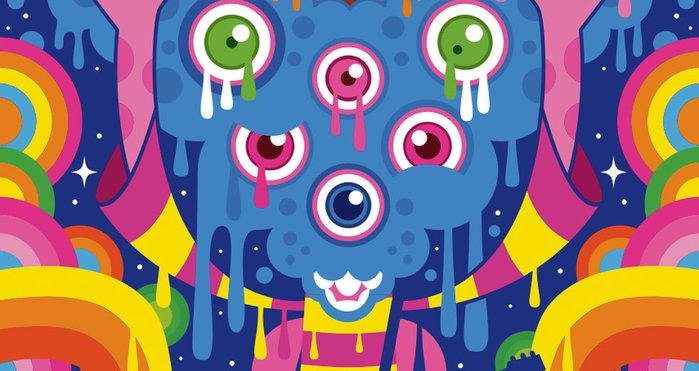Shaping the ’70s: Simon Draper and the Story of Virgin Records
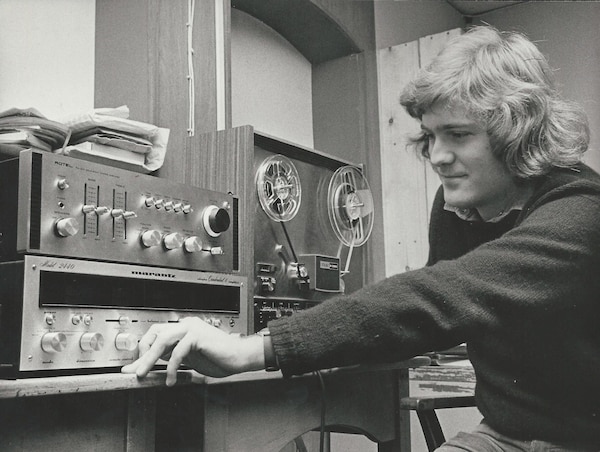
Virgin Records was the most popular and avant-garde record label of the ’70s. But it wasn’t Richard Branson that signed the Human League, Can and Mike Oldfield. This is the untold story of the man who did – and changed music forever
Mention the name “Virgin” today and most people will think of travel: by airplane, or, if you live in Britain, by train. There’s also Virgin Mobile, the wireless communications company. Older music fans recall the Virgin Megastores. Those have long gone, but Virgin Records – the retail chain’s sister company – lingers still, albeit in a half-life state, as a division within the conglomerate EMI, itself now swallowed by the Universal Music Group.
Whichever of the 150 or so Virgin Group companies you’re talking about, the brand has always been synonymous with a man and a face: the preternaturally youthful-looking, perpetually grinning Richard Branson. Assiduously cultivated but not wholly without basis, his image is that of an anti-Establishment entrepreneur, a risk-addicted maverick. Alongside his billion-dollar business empire, Branson is famous for his trademark beard and casual sweaters, his dangerous escapades in high-altitude ballooning and for having bought one of the Virgin Islands. In recent years, much of his energy has gone into a bid to pioneer commercial spaceflight with Virgin Galactic.
Back at the beginning, though, Virgin was identified not with space tourism but with space rock. And the record company was really the brain child of someone whose un-Branson-like reserve and lack of flash has ensured he’s always kept a low profile. Simon Draper – the 20-year-old virtual stranger to whom Branson handed the aesthetic helm of Virgin Records at their first meeting in 1971 – is a name known to industry insiders and serious scholars of rock biz history. But few of the music fiends who cherish landmark albums like Robert Wyatt’s Rock Bottom, Faust’s The Faust Tapes and Public Image Ltd’s Metal Box, or who had their young minds blown by avant-pop Brit hits like Flying Lizards’ “Money” and Japan’s “Ghosts,” know about Draper’s role in nurturing these artists.
During the first decade of its existence, Virgin could stake a strong claim to being the coolest record label in the world.
In its first phase of existence, Virgin put out some of the most uncompromisingly experimental music ever to loiter on the outskirts of the rock mainstream, including records by Can, Henry Cow, Gong, Tangerine Dream, Hatfield and the North, Ashra’s Manuel Göttsching, Steve Hillage, Lol Coxhill and Slapp Happy, to name a few. From 1973-1976, the label operated as kind of “audio Arts Council,” in the words of Al Clark, rock critic turned early Virgin press officer – a reference to the British institution that subsidizes minority-interest artists. In Virgin’s case, the funding resources came not from the government and taxpayers, but from the general public’s enthusiasm for Mike Oldfield’s Tubular Bells, the label’s early, unexpected blockbuster hit. Then came punk: Virgin quickly adapted to the new wave and post-punk climate, signing Sex Pistols (and their breakaway offshoot Public Image Ltd.), Magazine, Devo, XTC, OMD, the Human League, Simple Minds and more.
During the first decade of its existence, Virgin could stake a strong claim to being the coolest record label in the world. And that was all down to the taste and vision of Simon Draper.
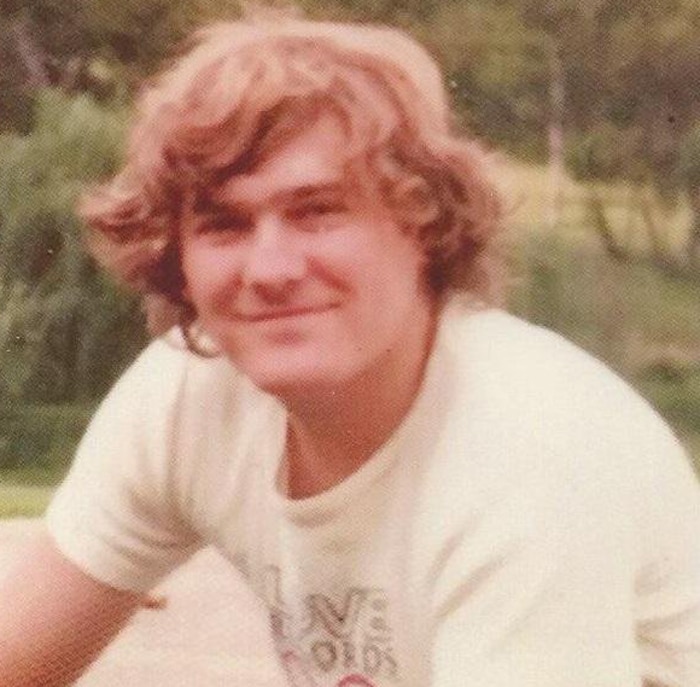
Phoning Draper at the London office of his book publishing company Palawan, which he founded after leaving Virgin in the early ’90s, what’s immediately striking is how young he sounds. Clear and well-spoken, with a hint of shy hesitancy, Draper’s voice makes it easy to imagine him as the 20-year-old student who arrived at Branson’s fledgling record mail-order company Virgin in early 1971 to ask for a job.
Draper had just finished an English and Politics degree in his native South Africa and came to England planning to embark on another bout of undergraduate study. He and Branson were second cousins but had never met before; in fact, Branson didn’t even know of Draper’s existence until he turned up at the Virgin office in West London. All that Draper was looking for was temporary work to tide him over until the start of the next academic year. Instead, he got a job that would last 20 years and make music history.
Two of the hallmarks of a great businessman are a knack for spotting talent and an ability to delegate responsibility to those who know better. Over lunch at a Greek café in Paddington, Branson quickly realised that Draper was the music fiend his company desperately needed. “He discovered that I knew a lot about music,” says Draper. “I was an avid collector of records and I’d had my own radio program when I lived in Durban.” Impetuously, but with uncanny clairvoyance, Branson offered the task of forming Virgin Records to his cousin. This was to be just one component of a planned empire that would also encompass a recording studio, music publishing, management, a retail chain: a vertical slice across almost every layer of the record business. “Richard’s vision was to be involved in every aspect of it,” recalls Draper. “He told me at that first meeting: ‘we’ll do the lot.’”
In ’71, though, this was just big Branson talk, and Draper’s initial role was as chief buyer for Virgin Mail Order. Branson had formed the company after the UK’s Retail Price Maintenance system was abolished, clearing the way for retailers to offer discounted goods. Hawking its wares through full-page adverts in the country’s leading weekly music paper Melody Maker, Virgin established a reputation for its cheaper prices and – as Draper’s influence kicked in – for stocking cool imports from America and Europe. “In those days things would often get released in America first and there’d be a long gap – six or eight weeks, maybe even longer – before they came out in the UK. That gave us a window for selling tons of stuff – Zappa, Captain Beefheart, Little Feat. Then there was the krautrock – things like Tangerine Dream.”
Virgin Mail Order wasn’t Branson’s first enterprise venture. In 1968, aged 18, the aspiring mogul launched a national magazine targeted at college kids, Student. Selling progressive rock was a logical extension of the student connection, for the UK’s university venues were the principal live circuit for the post-psychedelic scene then known as the Underground. Asked about Virgin’s links to the new university-educated market for expansive long-form rock that had consolidated by 1970, Draper says, “We were the market, ourselves. Not Richard, because he wasn’t really interested in music – he had the long hair but that was about it. But everyone else who worked at Virgin was passionate about it. More often than not after work we’d all go straight out to listen to live music. And smoke a lot of dope!”
Some accounts of the company’s early days say that it was all set to be named Slipped Disc, but then one of the team suggested Virgin, on the grounds that the staff were all “complete virgins at business.” Draper remembers it differently: “virgin” was meant to suggest “brand-new,” counteracting any assumptions consumers might have that the cheaper prices indicated that the records were used. “I don’t think ‘virgin’ was about lacking business experience. Although we all did. Richard and I were both 20.”
The label logo, created by Roger Dean, who was soon to become the leading album cover designer of the prog era, latched onto another meaning of “virgin.” The naked girl-child with long flowing tresses, turned into Siamese twins by a mirroring effect, evoked Garden of Eden innocence, and further identified Virgin with the long-hair underground of serious music heads. Now cheesy and distinctly suspect, but at the time thoroughly attuned to the post-hippie zeitgeist, the Virgin girl appeared at the top of the full-page mail-order ads and before long would be swirling on turntables as the label at the center of the platters.
Draper’s A&R approach emerged organically out of his activity on the retail side of the company, which in addition to the mail-order company included the early Virgin record shops, one of which was located on the main drag of the boho neighborhood Notting Hill Gate. In line with the company’s laid-back aura, which projected the idea that Virgin came from the same generation as their clientele, the shop encouraged customers to hang out, providing bean bags to sprawl on and spliff up. “To shop at Virgin was an experience rich with the ambience, and often the aroma, of an evening relaxing over Red Lebanese or Afghan black in one’s pad,” the journalist Mick Brown once recalled. “Not surprisingly some people stayed all day and never got ’round to buying a thing.”
After a hard week’s work running the mail-order company, Draper would work in the Notting Hill Gate shop on Saturdays. From his conversations with customers, from request letters sent in by the mail-order clientele and from his own ardent record-buying, Draper developed a sense of where the gaps in the music market were that could allow Virgin to develop a distinctive identity as a record label in an already crowded progressive music market: “Customers would write in and say, ‘Can you get us this record?’ All the krautrock groups that we signed, like Faust and Tangerine Dream, came about that way, because we were getting so many enquiries about weirdly named groups from Germany.”

Faust’s The Faust Tapes was among the first four releases that launched Virgin in May 1973. There was also Flying Teapot by Gong, the trippy outfit formed by ex-Soft Machine member Daevid Allen, and Manor Live, a jam session involving motley prog and Brit-blues journeymen captured at Virgin’s residential recording studio in the village of Shipton-on-Cherwell. But the record that really counted, putting Virgin on the map and making its adventurous signing policy financially viable, was Mike Oldfield’s Tubular Bells.
“When I started to look around to see what you could sign to a record label, it was a bit frightening really,” recalls Draper. “We had no track record, so we couldn’t really poach any of the bigger names. All we had to offer was the image of the record shops, which was sort of charismatic. One day I was down at the Manor, and one of the engineers – Tom Newman or Simon Hayworth – played me a demo.” Being a connoisseur of weirdo music, Draper recognized the name Mike Oldfield from the credits of solo albums by Kevin Ayers, formerly the frontman of the Soft Machine. He’d been obsessed with the Softs since reading an article about them in the jazz magazine Downbeat and had followed what ex-members like Ayers, Daevid Allen and Robert Wyatt had done afterwards.
Draper’s knowledge of out-jazz and experimental music also enabled him to hear an affinity between the hypnotic patterns of Tubular Bells and minimalist composer Terry Riley, whose work he’d loved since being initiated in the wonders of In C by a Durban architecture professor. “That first 15-minute demo of Tubular Bells was extraordinary – and Mike had played all the instruments himself, overdubbing by putting bits of cardboard over the recording head of his Akai tape machine. So when finally the button was pushed on the record label and Richard said ‘You’ve got to come up with some acts,’ Mike was the first person I called. And at that point he was working in the pit orchestra for Hair, as reserve guitarist! He’d been trying to get a deal and been turned down by everybody, so he was astounded when we said ‘Would you like to go and start recording the album? You can use the Manor.’”
A virtually all-instrumental album, divided into two parts that lasted 25 and 24 minutes each, didn’t seem like an obvious commercial smash waiting to happen. But the sales team of Island, who had agreed to distribute Virgin, responded with a spontaneous ovation when Draper played them Tubular Bells. The support of John Peel, BBC Radio’s resident champion of the underground, was crucial. Invited to dinner at Branson’s houseboat, which was moored in the canals of Little Venice in West London, Peel was wowed by the album and four days later played the whole of side one on his late night radio show Top Gear. He introduced the record with a list of all the instruments played by Oldfield – “grand piano, glockenspiel, a couple of different kinds of organs, bass guitar, electric guitar, speed guitar, taped motor-driven amplifier organ chord, mandolin-type guitar, fuzz guitar, assorted percussion, acoustic guitars and a variety of other things” – and at its conclusion 25 minutes later described Tubular Bells as “certainly one of the most impressive LPs I’ve ever had the chance to play on the radio – really a remarkable record,” and further hailed it as “an incredible start” for the new Virgin label.
As the record took off in the UK, Oldfield was arm-twisted into performing its live premiere at Queen Elizabeth Hall on June 25th, 1973. Fearful that Tubular Bells couldn’t be recreated onstage, even with a cast of dozens, Oldfield agreed only when Branson offered him a bribe: his own Bentley. Then Tubular Bells was picked up for the soundtrack of The Exorcist. The album was licensed to Atlantic in America and they put out an edit from the LP’s first side as a single, reaching #7 on the Billboard Hot 100. Oldfield followed up his multiplatinum global hit with adventurous but commercially successful albums like Hergest Ridge and Ommadawn. A year before punk, he was voted Britain’s Best Guitarist by the readership of Melody Maker, and many serious pundits believed the Oldfield approach – long-form, quasi-classical instrumental music – was set to be the future for rock. Over the next several years, there was a major label flood of similarly large-scale albums – epic in conception, dense in texture and narratively themed – from artists like Jeff Wayne, Vangelis, Godley & Crème, Alan Parsons Project and Dave Greenslade. Virgin naturally entered the fray with long-players from David Bedford, who had played alongside Oldfield in Kevin Ayers’ band, the Whole World, and would arrange a symphonic version of Tubular Bells recorded with the Royal Philharmonic Orchestra.
At the opposite end of the spectrum from the new middlebrow represented by Tubular Bells – exquisitely played, cleanly produced, intelligent but unchallenging, eminently usable as background music – was The Faust Tapes, also one of the first four Virgin releases and a legend in its own right. Picking up on the most hallucinatory studio practices developed by the Beatles and Zappa, combining them with Velvet Underground levels of abrasion and attack and infusing the whole with a spirit of absurdist tomfoolery equal parts Dada and Fluxus, Faust had already released two gloriously out-there albums via the German branch of Polydor. For their Virgin debut, the bright idea arose to release the album priced at 48 pence – the cost of a single, and less than a third the price of a regular LP. Neither Virgin nor Faust would make a penny, but a potentially huge number of listeners could be turned on.
Draper isn’t sure whether it was Faust’s charismatic producer/spokesman Uwe Nettelbeck who came up with this marketing ruse, or Richard Branson himself. The latter had a fixation on the discount concept that ran through his whole career, from the mail-order company to Virgin Atlantic, which took as its model the low-fare approach pioneered by Laker Airways. The marketing ploy was also used in 1974 with Virgin’s Crisis Tour, a name that played on the feeling that Britain was on the verge of collapse, beset with strikes, inflation, shortages in shops, rising unemployment and dark whispers of national decline and a possible military coup to restore order. To cheer up young rock fans feeling the pinch, Virgin offered bargain-rate admission to a series of concerts around the country featuring acts like Henry Cow and Hatfield and the North – all you had to do was cut out the coupons in the NME.
Whoever came up with The Faust Tapes pricing scheme, it worked wonderfully: somewhere in the region of 50,000 copies were sold. Admittedly, many purchasers played the record just once; there are tales of spontaneous Frisbee-throwing contests using Faust’s most avant-garde statement ever. Nonetheless, the record was an aesthetic triumph, both sonically and in terms of its design. “Nettelbeck was a fan of Bridget Riley,” says Draper, referring to the pioneer of Op Art: swirling, geometrically intricate paintings that disoriented and played tricks on the eye. Although she disliked the association of her deeply cerebral and rather solemnly motivated work with the faddish foppery of psychedelia, Riley agreed to permit the reproduction of her canvas “Crest” on the cover of The Faust Tapes.
Then, in the autumn of 1973, Faust toured the UK in the company of Henry Cow, whose spiky and severe prog rock had a bracingly anti-capitalist edge. “Those concerts were amazing,” recalls Draper. “For the gig at the Rainbow Theatre in London, Faust bought about 30 television sets and stacked them up, all showing the same thing – an opera singer, I think - and then they had this guy that they’d picked up doing roadwork near the venue and he was jackhammering away at this huge lump of concrete onstage.”
Somewhere between Faust’s absurdist cacophony and Oldfield’s accessibility lay the serenely pulsing electronic mindscapes of Tangerine Dream. Virgin’s alliance with the band was sound business logic: the mail-order company had been selling something like 15,000 copies of their early albums like Atem on the German label Ohr. Speaking just a few years before he passed away in 2011, Edgar Froese recalled Draper phoning him in Berlin “to say John Peel was playing Atem to death. Two days later I sat on the stairs of the Virgin record shop in Notting Hill and signed a contract which was in power from 1973 to 1983. Ten years of roller-coaster experiences began!”
Tangerine Dream’s Virgin debut Phaedra marked the group’s full-blown shift into a purely electronic trance-rock sound, propelled by Moog-bass pulsations and undergirded with metronomic drum machines. As with Oldfield’s music, the influence of Terry Riley and Steve Reich was audible; Philip Glass, another maven of minimalist systems-music, would actually release several albums on Virgin. But with Tangerine Dream and their spiritual kinsman and German compatriot Klaus Schulze (who also soon signed to Virgin), the mesmerizing patterns were inextricably tied up with post-psychedelic rock culture. Their albums, which generally consisted of four long tracks or sometimes just a pair of side-long epics, were meant as eyelid-movies for stoned immersion. Phaedra went Top 15 in the UK on its February 1974 release and a flurry of follow-up albums and Froese solo efforts swiftly followed, while Tangerine Dream became a fixture of the UK concert-hall circuit and successfully toured Europe and America.
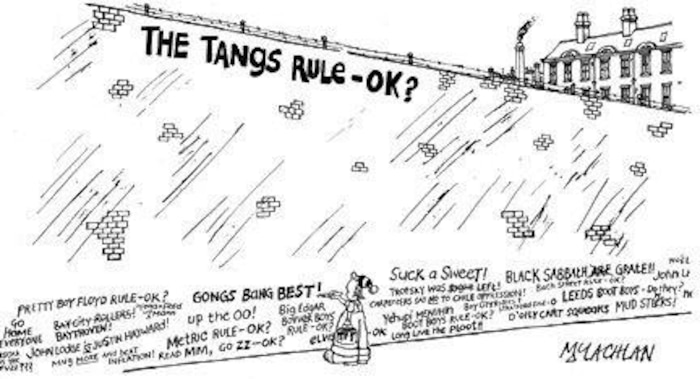

Draper reckons Virgin actually coined the term “krautrock” as the name of an imports section in the mail-order catalogues and full-page ads, further pinpointing its author as John Varnom, who wrote advertising copy for the label. If Germany was a strong contender for Virgin’s spiritual homeland, its main rival was Canterbury, a university town in the South of England. That was where the Soft Machine hailed from and out of which spawned the Canterbury Sound: a rubric for an incestuous cluster of post-psychedelic jazz rock outfits who were sometimes endearingly whimsical and sometimes forbiddingly abstruse, and generally had either a direct connection to or a marked affinity with the Softs.
Matching Mole was the band Robert Wyatt formed after his bitter expulsion from the Soft Machine. Matching Mole themselves dissolved after two albums for CBS, and Wyatt started to form a new group involving prog luminary Francis Monkman of Curved Air and various Canterbury-aligned musicians. “We were trying to sign that band,” recalls Draper. “We spent time with Robert and he came to the Manor and did some canoeing on the river Cherwell.” But then, during a party at the mansion-block flat of socialite and Virgin recording artist Lady June, Wyatt tumbled out of the window of the bathroom when attempting to evade his enraged wife Alfie. The accident left him paralyzed below the waist, unable to play drums again or participate in a touring rock band. So instead of signing the planned Canterbury supergroup, Virgin took on Wyatt as a solo artist. Rock Bottom, his 1974 debut for the label, is a heartbreakingly poignant allegory of Wyatt’s emotional regression and gradual self-rebuilding during his recovery from the accident, couched in a blurry oceanic sound that recalls Miles Davis’s In A Silent Way and Jimi Hendrix’s “1983... (A Merman I Should Turn To Be).”
After this avant-pop triumph, Virgin managed to turn Wyatt into a pop star – albeit a minor one, and only briefly – when they badgered him into releasing a cover version of the Monkees’ “I’m A Believer” as a single. “Robert had mentioned in an interview that he’d love to record that song and I thought, ‘Wow, fantastic idea,’ and we kept on at him about it,” recalls Draper. The single became a hit and Wyatt was invited to perform on Top of the Pops. “That’s when the producer of the show said that terrible thing about, ‘Couldn’t they have something more attractive on the stage than a wheelchair?’” Wyatt was on the verge of storming out but was cajoled into going through with the performance, which went out to 10 million-plus viewers in September 1974.
By 1975, Virgin had established a distinct niche in the British progressive market as the premier home for European cosmic rock and the Canterbury style of jazz-tinged English eccentricity. For Draper, this strategy had an Oedipal undercurrent insofar as it was necessary to distinguish Virgin from the label he most admired, Island, then widely considered the best record company around. “To me they were the epitome of what a label should be,” says Draper. But Island had already cornered the market in a certain kind of British folk/jazz/blues troubadour (Nick Drake, John Martyn, Richard Thompson, et. al), so Virgin had look elsewhere to create an identity.
“We didn’t want to sign people who were with other companies or had been with other companies,” Draper recalls. “We thought we knew better. It was extreme arrogance!” He immediately goes on to say that in the early days Virgin had no idea what they were doing. “I look back and the people we were signing – like Robert Wyatt – were all older than us.” He recalls going to see Hatfield and the North play at the Royal College of Art and being picked up by a female friend of the band who thought he was simply a cute student. “When I turned up in the dressing room backstage later, it was very embarrassing for them. People in those days had stereotyped ideas of what a record executive should look like, and it wasn’t me.”
One thing Virgin had in common with Island was location: Both companies were based in London’s equivalent to Haight-Ashbury, the Ladbroke Grove / Notting Hill Gate area. Rife with head shops and macrobiotic restaurants, the neighborhood had been home at different points to Marc Bolan, Jimi Hendrix, Nick Drake and Hawkwind; it was where you could find the offices of underground press papers like International Times. Draper lived in Ladbroke Grove pretty much from the minute he arrived in the UK. After a period on the houseboat in Little Venice, Branson also moved to a side street off Portobello, the most bustling and bohemian road in the Grove, buying a bright red house off Peter Cook (the comedian who would later record for Virgin a series of legendarily obscene albums with Dudley Moore). Then Virgin itself moved its offices to a building in Vernon Yard, another road just off Portobello. “Pretty soon, a lot of the people in the company moved to the area because it made sense to live close to where you were working.”
Portobello and its environs are nowadays almost completely the preserve of the monied: the Saturday street fair continues, and retains here and there its old flea market quality, but the streets are otherwise dense with boutiques, delicatessens, fancy restaurants, chic bars and organic Fair Trade cafes. Back in the early ’70s, though, it was a scuzzy and edgy area, teeming with squatted houses and unlicensed venues. “There were lots of big houses, but they were divided up into flats,” recalls Draper. “Whereas in recent times, they’ve been turned back into houses for rich people. Back then, though, it was a really hip area to live. And then you had the whole reggae connection with so many of the people who lived there coming from the Caribbean originally.”
Virgin would follow Island’s footsteps in signing up Jamaican artists. Along with enthusiasm for the music, another impetus was discovering that U-Roy’s talk-over records sold hugely well in Nigeria as exports, which offered a quick fix to Virgin’s cash-flow problems. “We signed some more artists and soon we were chartering planes to take stuff out to Nigeria, loaded with albums. Then we started our own reggae imprint, the Front Line.”
Another area where Virgin built on Island’s innovations was the creation of a label aura through record design and advertising. Whether witty and playful or trippy and mysterious, the album covers, concert posters and adverts worked through an inclusion/exclusion effect. A good example would be the series of label samplers Island released at the end of ’60s and start of the ’70s, such as El Pea, which featured a close-up photograph of a legume in ultra-vivid green. The stoned-to-say-the-least humor of such visual puns offered a generationally-targeted code to be decrypted by turned-on cognoscenti. Hipgnosis, the name of the company that rivaled Roger Dean as the prog era’s leading designer, spells out how it worked: “hip” as in hipster, “gnosis” as in secret knowledge. “We had a lot of fun with the advertising,” says Draper. “My favorite out of the ones I came up with was the campaign for Tangerine Dream with the melting vinyl records – inspired by Salvador Dali’s ‘soft watches,’ obviously.”
From the marketing to the label’s logo, from the far-out sounds engraved in the vinyl platters to the enigmatic artwork wrapped around them, from the roster’s lank locks to the company’s Ladbroke location, Virgin could not have been more quintessentially early ’70s.
And then punk happened.
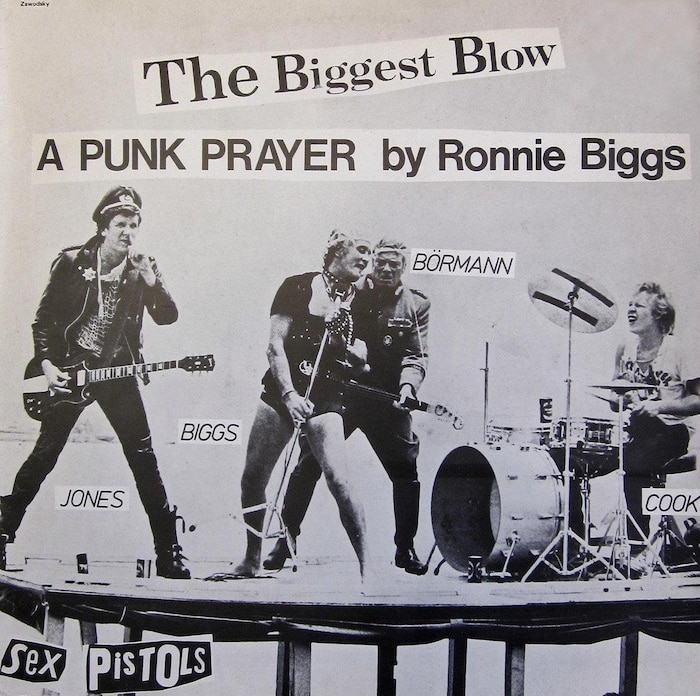
Initially, punk seemed like an inexplicable affront to everything that Virgin represented. “Indescribable noise” is how Draper once described the sound of the Sex Pistols. “We all went to see them at the 100 Club,” he recalls now. “That was the gig where Sid Vicious bottled someone. I found the aggression really off-putting.”
Like most denizens of the progressive realm represented by labels such as Island, Harvest, Charisma and others, Draper had assumed music would continue on its ever-upward path of sophistication. Fusion was the prevailing ethos at the mid-decade mark: rock’s destiny was to keep on hybridizing and hyphenating itself with classical, jazz, folk and world influences. “Music Week was doing a series of interviews with A&R people in 1976, asking what they were listening to,” Draper recalls. “I said ‘Keith Jarrett’s Arbour Zena and Joni Mitchell’s The Hissing of Summer Lawns.’”
Punk erupted in the midst of all that maturity and musicianship, a teenage rampage of crude energy stomping on the prevailing ideals of subtlety and sensitivity. Skinning up and drifting off to album-side-long dreamscapes suddenly seemed decadent and disengaged, a retreat from the political urgencies of the present. The crisis time demanded not discounted admission to a Hatfield and the North concert, but proper crisis music.
It was Branson – always more attracted to rock for its ability to cause a social commotion than to sonic voyages of discovery – who realised Virgin simply had to sign the Sex Pistols to stay relevant. Draper came around to the idea after hearing the debut single “Anarchy In The UK,” which was released on EMI: “I realised I’d made a huge error.” He’d also seen and liked the Buzzcocks when they played at the Screen on the Green, and by the end of 1977 had signed lead singer Howard Devoto’s new band, Magazine.
Having the Sex Pistols on the label proved to be a trial for someone used to dealing with genial, easy-going longhairs. Because of the company’s hippie image, Virgin was anathema to manager Malcolm McLaren, for whom “liberal” was a pejorative and who feared that Branson’s tolerance would effectively defuse the threat posed by the Pistols. So he kept coming up with ever-more outrageous stunts – like recording the single “Nobody Is Innocent” with convict-on-the-run Ronnie Biggs, an exile in Brazil, and further pretending escaped Nazi Martin Bormann also appeared on the record – all in the hope of getting dropped by Virgin, just like EMI and A&M had previously done. “Malcolm was testing us all the time,” Branson recalled years later. “He would come in with an advert that was pushing it to the extreme to see if we’d run it. And we would!” That only infuriated McLaren further. Draper in particular found McLaren’s aggressiveness hard to deal with.
Having the most controversial and talked-about band in the world – the public face of punk – on the label did serve to totally and almost instantly change Virgin’s image. The old Roger Dean logo was swiftly replaced by a new wave-compatible one based around a signature, which would become the enduring icon for the company, appearing on the tail fins of its airplanes to this day. The Virgin roster was ruthlessly purged of its least commercial pre-punk oddballs and restocked with short-haired, angular-sounding signings like Devo, XTC and the Skids. Mike Oldfield naturally retained an honorary prominence, but grew increasingly resentful of the upstart newcomers. The final straw, according to Draper, came when Virgin only managed to get one of Oldfield’s later albums licensed in America because the label in question really wanted XTC. “It was a bargaining tool. Mike went really berserk – I think he decided then and there that he was leaving us whenever he could.”
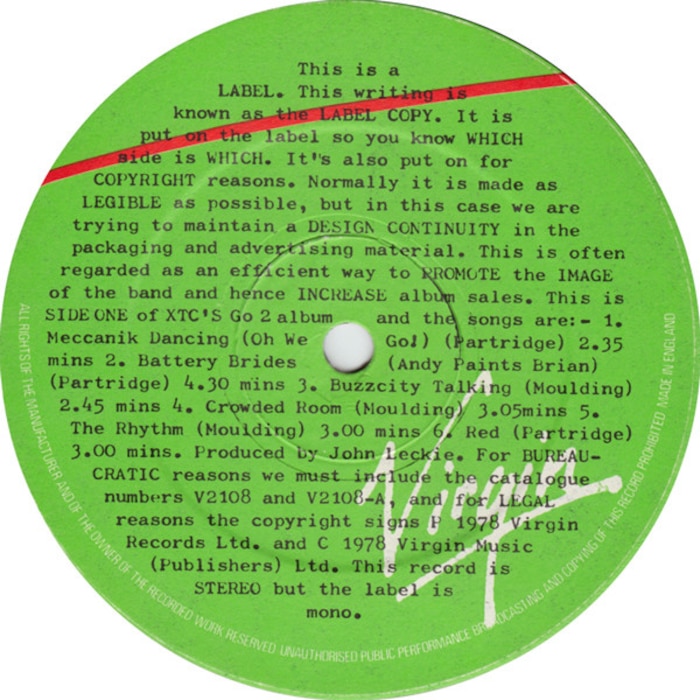
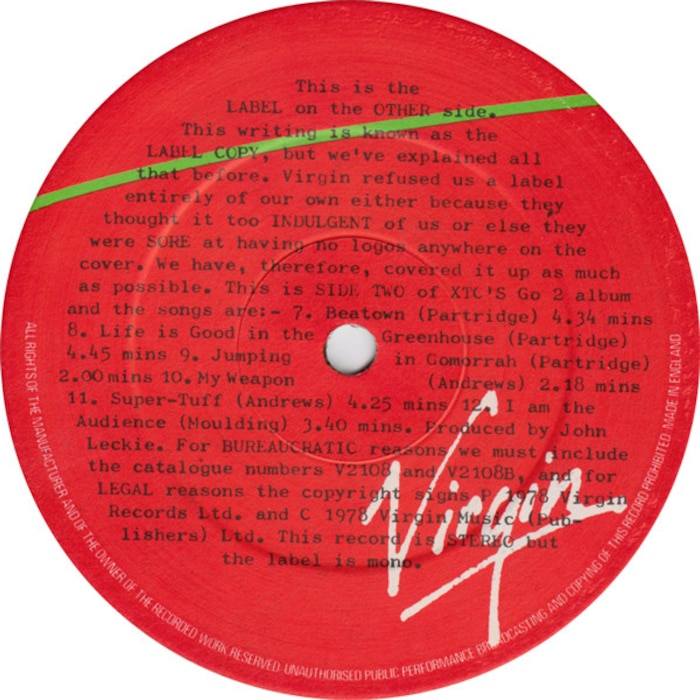
XTC were easily Draper’s favorites of the new breed. “I had to fight tooth and nail against other record companies to get them. But the whole of Virgin loved XTC as people because they were so entertaining and creative – everyone became friends with them.” Public Image Ltd, the band John Lydon formed after leaving Sex Pistols and shedding the “Rotten,” were more problematic. “They felt obliged to be antagonistic. Keith Levene, the guitarist, was really difficult to deal with.” Yet before punk, Lydon had been an avid listener to Virgin-aligned music, loving artists like Captain Beefheart and the Magic Band (who Draper had signed for a run of return-to-form albums in the late ’70s), and even outright proggers like Pete Hammill and his band Van Der Graaf Generator, who were on Charisma. These kind of avant-rock influences were audible in Lydon’s piercing vocals for PiL, in the tripnotic grooves churned up by Can-worshipping bassist Jah Wobble and the fractured abstraction of the guitar work from Levene, a secret admirer of Steve Howe from Yes.
Lydon and Draper would eventually bond over that least punk of things: hi-fi. “In my office I had this massive pair of towering Buckingham speakers, about four feet tall. They belonged to me, not the company, and John loved listening to them. Eventually I sold them to him.” Another reason Lydon might have warmed to Draper was that he bankrolled the recording, in top-of-the-line studios, of three of the most uncompromisingly avant-garde albums ever released by a mainstream rock label: First Issue, Metal Box and Flowers Of Romance.
“I can remember when PiL presented us with the debut single, ‘Public Image’ – it was just dynamite, and you thought: ‘This is going to be a #1 hit. Here we go, this is the Sex Pistols, reincarnated, better. Onward!’ But then they brought us Metal Box and you thought, ‘We’re getting something else.’” As it happens, buoyed by awestruck reviews and Lydon’s stature as a post-punk prophet, Metal Box sold surprisingly and reassuringly well, despite the hefty price charged on account of the striking tin canister in which it was encased. “Death Disco,” the single that preceded the album and appeared on it renamed “Swan Lake,” was actually a Top 20 hit, and even the unhinged “Flowers Of Romance” – a tribal stampede of drums overlaid with scraping violin and shrieking Lydon – secured PiL a Top of the Pops appearance.
By the end of the ’70s, Branson’s focus – never very tethered to music – had drifted away to other ventures, including an ultimately doomed attempt to establish a rival London listings magazine to Time Out called Event. He left Virgin Music entirely in the charge of Draper, who swapped his earlier title A&R Director for Managing Director. The label then entered its most prosperous period yet, with the worldwide breakthrough of the Human League and Culture Club, the rise of Simple Minds from an art-rock curio to stadium conquerors and Virgin’s acquisition of its prog-era friendly rival Charisma, which gave them three of the most successful acts of the ’80s: Phil Collins, Peter Gabriel and the band they both came from, Genesis.
In their very early days, when they went by the name the Future, the Human League sounded like Virgin wannabes: a shoestring Tangerine Dream, recording a 97-minute track titled “Last Man On Earth” and experimenting with computerized systems for random lyric generation. Even after shifting towards short songs and tunefulness, their first two albums for Virgin – Reproduction and Travelogue – had a geeky science-fiction-fan air that promised “cult group” status at best. But when the group fissured owing to irresolvable personal friction, with one faction keeping the original Human League name and the other half forming Heaven 17, Draper suddenly found he had two pop groups on his hands. Martin Rushent, the producer who’d honed the Stranglers and Buzzcocks into pop-punk hit machines, showed Human League how to tighten their dance grooves and sharpen their hooks, and suddenly they were topping international charts with “Don’t You Want Me” and “(Keep Feeling) Fascination.”
“That’s one of those miracle moments when it all takes off,” remembers Draper. “Dare started taking shape and you suddenly realise, ‘There’s not one hit on this record, there’s five or six.’ You’ve just struck gold. That was very exciting – but a completely different thing from what we’d had before at Virgin.”
The company kept expanding all through the ’80s, opening branches in European countries and then launching Virgin America. It was solid business sense, but it meant a loss of aesthetic control for Draper. “Suddenly you’ve got all these companies saying, ‘We can’t get bigger just on the product that you supply us with. We need to have French acts, German acts.’ So they’re signing Eurovision Song Contest-type acts. Or the Canadian label wants to sign a heavy metal group. Suddenly the criteria became not musical excellence or excitement anymore. We became more of a mainstream record company. Virgin America had a brilliant A&R guy, Jordan Harris, and they did some wonderful things, like reviving Roy Orbison’s career. But in the States it’s very much all about the bottom line. So the days were really long gone of us being the cutting-edge record company.”
In a sign that Virgin had become a major label, capable of sparring with the most heavyweight music corporations around, Branson pulled off his long-running dream of signing the Rolling Stones (something he’d tried before in the early ’70s). Janet Jackson was another high-profile, huge-advance signing. Then, in 1992, Branson sold Virgin Music Group to EMI for a figure just shy of $1 billion. Draper stayed on for half a year or so to smooth the transition, but he had lost interest in the music business long before that.
Shrewdly, at a much earlier stage of the company’s existence, Draper had pressed for and secured a 20% share in Virgin Music, using the truthful expedient of informing Branson that he was seriously considering moving with his Chilean girlfriend to her homeland. That fateful stake made him a very wealthy man following the EMI deal. Draper was free to pursue his other passions – modern art and motor racing – to the hilt. He built up valuable collections of paintings and cars. He launched Palawan Press, a publisher dedicated to deluxe, expensive photo books about cars. Like Virgin in its earliest days, the company sells by mail-order only. “We do the books in a way that’s never been done before. People like them.”
The bygone informality of the ’70s record biz is encapsulated in the odd couple partnership between Richard Branson and Simon Draper. During Virgin’s golden age, they managed to maintain a marriage between the usually opposed imperatives of enterprise and aesthetics, meshing Branson’s dynamism and ambition with Draper’s taste and sensitivity to the needs of the artists.
In our conversations, Draper repeatedly stresses that Branson didn’t have a clue about music and in fact didn’t particularly like music, or even listen to it. When he did intervene in the decision-making process at Virgin, Branson’s impulses were sometimes spectacularly misguided.
“With Tubular Bells, we took it to Cannes for the music business trade fair Midem and played it to various people. Most people in the industry didn’t get it, because it had no vocals. And one record executive actually said ‘It’s great – but you’ve got to put vocals on it.’ And when we got back Richard tried to get Mike to put some vocals on it – missing the point entirely!”
Other legendary tales of Branson’s misconceived gambits include an alleged attempt to get Lydon to abandon PiL and reunite with Steve Jones and Paul Cook by playing him the sub-Pistols tunes that his erstwhile bandmates were recording for Virgin as the Professionals. Branson is also said to have tried to persuade Devo that they should take Johnny Rotten as their new frontman, even going so far as to engineer a meeting between both parties in Jamaica, where the ex-Pistol had flown out with the Virgin boss to help him pick reggae artists for the Front Line imprint.
Draper doesn’t recall either of those stories, but he does say that Branson “had certain things, bees in his bonnet, that would tend to recur. For instance, after ‘I’m A Believer’ was this sort of interesting hit single for Robert Wyatt, Richard would often suggest to other people that they should record ‘I’m A Believer.’ You have to understand, Richard knew zilch about music. When he did Desert Island Discs” – the long-running BBC radio show in which a famous guest discusses their all-time favorite pieces of music – “we had to tell him what records he liked!
“The music thing with Virgin was just accidental – it wasn’t because Richard liked music particularly. He could have been doing anything – and he can do anything. He’s an entrepreneur.” Branson, for his part, has admitted as much, telling The Face magazine in 1984 that “I’m more cynical than 99 percent of the people who work for Virgin. Simon loves records and his whole involvement is through that. With me it’s different. It’s not a love of music.”
“Our relationship worked well,” Draper continues, “because it was his drive and ambition – his lack of fear – propelling it, but he needed someone else to make the label credible. There was this tension between doing things that were exciting and interesting, and being successful. I had a lot of freedom to do what I wanted, but equally Richard would keep me on my toes, because he wanted the success. I was constantly having to fight against him wanting to sign things I considered rubbish.”
The Branson/Draper symbiosis was a prime example of an archetype that flourished from the late ’60s onwards, made the ’70s a rich and teeming-with-possibility decade for music and only really faded in the hard-headed ’80s: the aesthete-entrepreneur. Draper and Branson split those functions and faculties across two chalk-and-cheese individuals, but in other record-biz figures of that era the two impulses coexist in the same body. Just like the kind of upper middle class, well-educated bands that started coming through with Pink Floyd and Soft Machine and their ilk, most of these art-minded businessmen came from posh backgrounds. They loved the music and loved elements of the counter-culture (the sex, the drugs, the hair), but they weren’t looking for a revolutionary transformation of society. They enjoyed the buzz of making deals and breaking bands, the hustle and hype. Some pretty much learned the biz on the job; others had picked up a sense of how worldly things worked from their monied backgrounds. For a surprisingly long period, these operators were able to sustain the fiction that the record business was not really a business at all. That somehow Art and Money, boundary-busting masterpieces and the bottom line, could coexist fruitfully.
“I had no business experience when we started,” recalls Draper. “My mother and father are teachers and really I should have ended up in academia or in the media. But the music business in those days... I remember an article in the Financial Times during the ’70s that said music publishing was the easiest way to make money known to man. We saw that with Virgin Publishing, when we signed Sting. This was before the Police, when he was in a band called Last Exit, who weren’t that great – but we could see that he was great. You can’t fail to make a lot of money out of something like that.”
“The atmosphere was great back then – the fact that you didn’t need to be a professional, it was all intuitive,” Draper continues. “And the record business attracted people of that sort really, driven mainly by love of music.”
Draper says that since he left Virgin a quarter-century ago he’s never once been tempted to go back into the music industry. When he talks to his friends who are still involved, he finds that they are struggling. “They don’t like the record business as it is,” Draper says in his mild, understated way. “So many aspects of it aren’t... great.”
Header image © Courtesy of Simon Draper

